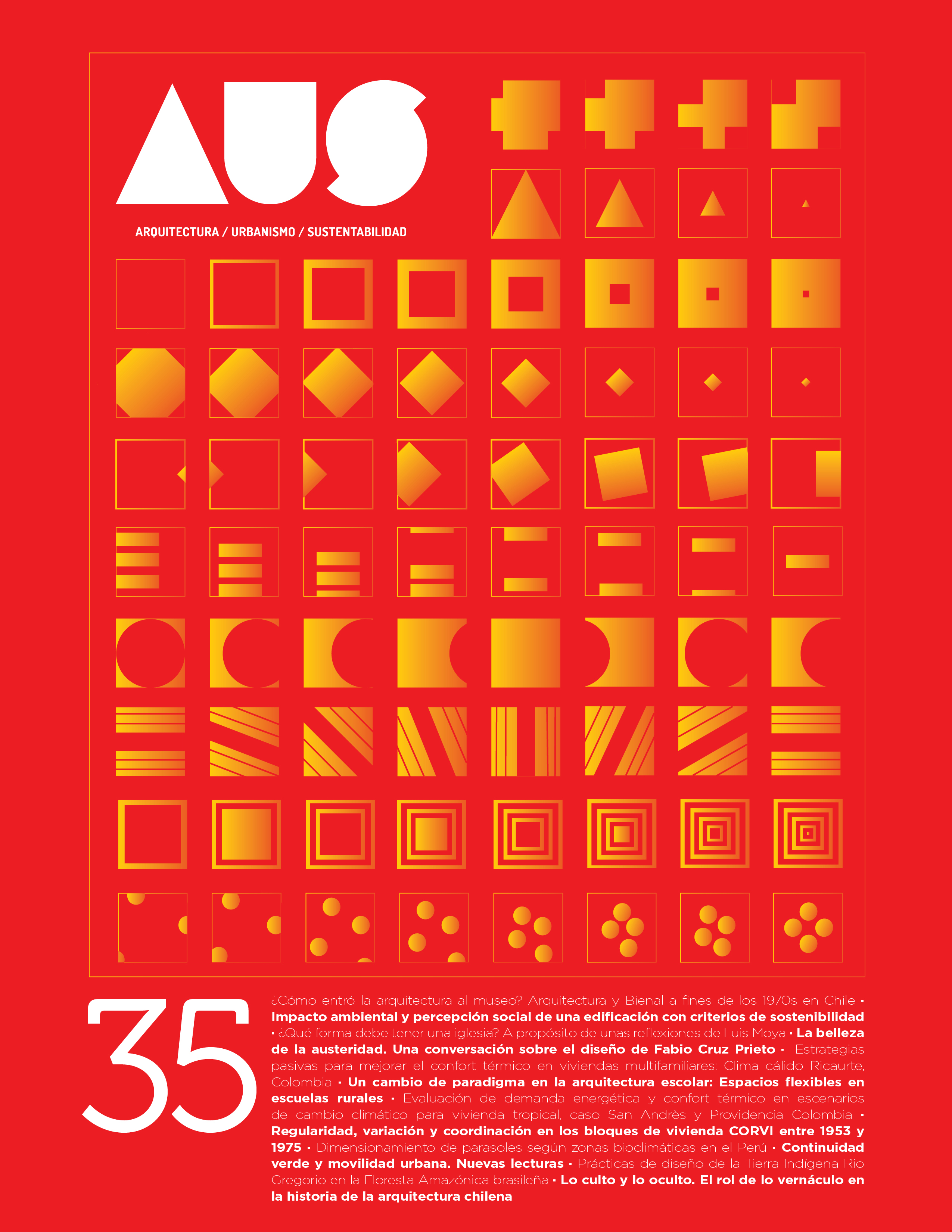On a Reference System. Regularity and Variation in the High-Rise Housing Blocks Designed by CORVI
Main Article Content
Abstract
This work discusses the organization process of a reference system based on the case of high-rise housing blocks designed by the Housing Bureau (CORVI). Using a process layout approach, the regularities and variations in shapes and programs are identified and compared within a complex of 18 types of blocks designed between 1953 and 1975. The result is a regime of references developed by CORVI which, based on regular nominative, formal, and technical elements articulates a housing block typology known by then as “collectives”. This typological complex suffers constant variations and adaptations, but they become more extreme towards the end of CORVI’s corporate existence, marking a closure and –beyond de canon– enabling the consideration of the existence of typological cycles within the practices of Chilean architecture.
Article Details
References
Archenti, N. (2018). Estudio de caso/s. En: Alberto Marradi, Archenti, N. y Piovani, J.I. Manual de Metodología de las Ciencias Sociales. Buenos Aires: Siglo XXI Editores.
Argan, G. C. (1983). Tipología. Summarios 71: 2-14.
Beach, D. y Brun Pedersen, R. (2019) Process-Tracing Methods: Foundations and Guidelines. Ann Arbor: University of Michigan Press.
Bourdieu, P. (2006). Razones prácticas (Sobre la teoría de la acción). Barcelona: Anagrama.
Bustos, M. (2021). El proyecto residencial colectivo en Chile. Formación y evolución de una política habitacional productiva centrada en la noción de copropiedad. Revista de Geografía Norte Grande, (78), 215–236. https://doi.org/10.4067/S0718-34022021000100215.
Coller, X. (2005). Estudio de casos. Cuadernos Metodológicos 30. Madrid: Centro de Investigaciones Sociológicas.
Deleuze, G. (2002). Diferencia y repetición. Buenos Aires: Amorrortu.
Galaz-Mandakovic, D. (2019). Edificios máquinas: Arquitectura Moderna y disciplinaria del Frente Popular en Tocopilla. Revista AUS (Arquitectura / Urbanismo / Sustentabilidad), ( 26), 29-34. doi: 10.4206/aus.2019.n26-06.
Hidalgo-Dattwyler, R. (2019) La vivienda social en Chile y la construcción del espacio urbano en el Santiago del siglo XX. Santiago de Chile: RIL Editores.
Mahoney, J. (2015). Process Tracing and Historical Explanation. Security Studies, 24(2), 200–218. doi: 10.1080/09636412.2015.103.
Moneo, R. (1978). On typology. Oppositions 13: 22-45. Cambridge: The MIT Press.
Moneo, R. (2015) Typology in the context of three projects: San Sebastian, Lacua, Aranjuez. The Journal of Architecture, 20:6, 1067-1087, doi: 10.1080/13602365.2015.1116347.
Montaner, J. M. (2022). La modernidad superada. Ensayo sobre la arquitectura contemporánea. Barcelona: Gustavo Gili.
Pérez Oyarzún, F. (2017) Arquitectura en el Chile del siglo XX. Vol. II. Modernización y Vanguardia. Santiago de Chile: Ediciones ARQ.
Raposo Moyano, A. (1999). La vivienda social de la CORVI: un otro patrimonio. Revista INVI, 14(37). doi: 10.5354/0718-8358.1999.62095.
Stake, R. (1999). Investigación con estudio de casos. Madrid: Ediciones Morata.
Thévenot, L. (2015). Making commonality in the plural, on the basis of binding engagements. En: P. Dumouchel & R. Gotoh (Eds.), Social bonds as freedom: Revising the dichotomy of the universal and the particular (pp. 82–108). London: Berghahn Books.
Valenzuela Grollmus, V. M. (2023). Edificios Colectivos de la Caja de Seguro Obrero Social como hecho escrito del Norte Grande de Chile. Anales de Investigación en Arquitectura, 13(1). doi: 10.18861/ania.2023.13.1.3371.
Vergara-Vidal, J. E. (2023). Architecture as fluid technology. The housing blocks by Corporación de la Vivienda of Chile. Tapuya: Latin American Science, Technology and Society, 6:1, https://doi.org/10.1080/25729861.2023.2273682.

